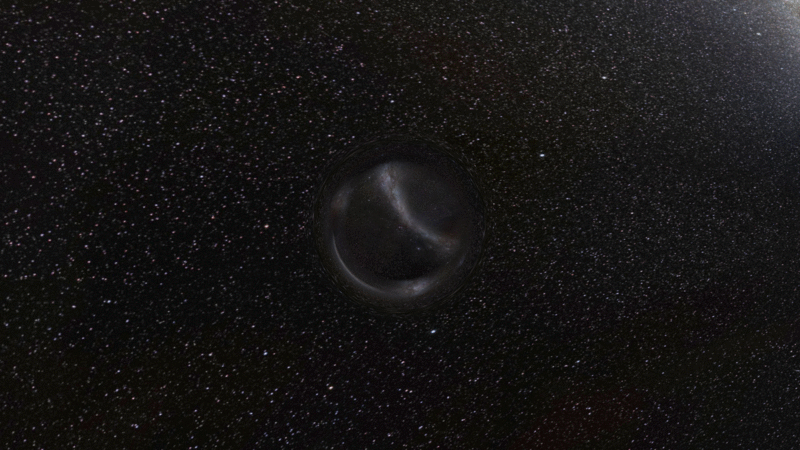Exploring the Ejection of a Supermassive Black Hole from a Galaxy
Written on
Chapter 1: The Journey of a Supermassive Black Hole
A remarkable event has been observed: a supermassive black hole has been expelled from its galaxy, paving the way for new star formation in its wake. Contrary to common belief, these immense gravitational entities are not fixed in place. Under certain conditions, they can be ejected beyond their galactic confines. This extraordinary occurrence has been documented for the first time by a team of researchers.

[Photo: Sergio Brito, CC BY-SA 4.0, via Wikimedia Commons]
Supermassive black holes, often found at the core of galaxies, can weigh millions of times more than our sun. It seems almost unfathomable that such colossal objects could be propelled out of their home galaxies into the vast expanse of space. However, a recent study published in The Astrophysical Journal Letters by an international group led by Pieter van Dokkum from Yale University sheds light on this phenomenon. The researchers detail the identification of a candidate supermassive black hole that has ventured into intergalactic space, leaving behind a trail that may foster the birth of new stars.
Section 1.1: The Hubble Discovery
The journey began with a photograph taken by the Hubble Space Telescope. Although the image is somewhat blurry, it reveals a brilliant irregular spot on the left, which is a galaxy, and a prominent streak extending from it. This streak marks the path of a massive object that was expelled from the galaxy approximately 39 million years ago, traveling at an astounding speed of 5.7 million kilometers per hour through the intergalactic medium, which is composed of dust and gas not bound to any galaxy.
This video explores the existence of supermassive black holes at the centers of galaxies and their potential for movement.
Section 1.2: Theories of Ejection
Research has long acknowledged that black holes, even those of significant mass, are not necessarily stationary. For instance, a supermassive black hole moving differently from its galaxy was discovered in the J0437+2456 galaxy two years ago. Meanwhile, the Abell 2261-BCG galaxy presented an anomaly, as no black hole was found at its center, despite theoretical expectations of one with a mass reaching billions of solar masses.
To account for these observations, scientists proposed that during galactic mergers, gravitational waves can asymmetrically propagate, resulting in gravitational recoil that may eject black holes from their galaxies. Another theory suggests that when two galaxies merge, forming a binary system of supermassive black holes, the approach of a third galaxy can destabilize the system, leading to the ejection of one black hole at remarkable speeds.
Chapter 2: Black Holes in Intergalactic Space
Despite the intriguing nature of these phenomena, no confirmed instances of black holes existing outside their galaxies have been recorded. This is likely due to many black holes being dormant and thus invisible to us, as they do not emit detectable radiation when not consuming matter.
However, researchers, including van Dokkum and his colleagues, have identified a potential indicator of a massive black hole's presence in intergalactic matter. By analyzing initial images from Hubble and then utilizing the Keck Observatory for further observations, they revealed a trail measuring 200,000 light-years long. This streak, which shares a redshift with the galaxy, suggests a connection between the two entities.
Further examination of the streak indicated varying brightness levels, implying that new stars are forming in certain regions. This is attributed to shock waves generated by the passage of the supermassive black hole, which compress gas and trigger gravitational collapse, fostering star formation.
This video discusses how pulsars can help locate supermassive black holes and the implications for our understanding of the universe.
In conclusion, the discovery of a supermassive black hole ejected from its galaxy not only reshapes our understanding of these cosmic giants but also highlights the dynamic processes that govern the universe's evolution.